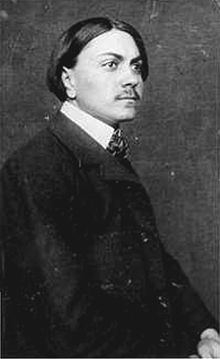János Mattis-Teutsch
| János Mattis-Teutsch | |
|---|---|
 |
|
| Born |
13 August 1884 Brassó (Braşov), Kingdom of Hungary, Austria-Hungary |
| Died | 17 March 1960 (aged 76) Braşov, Socialist Republic of Romania |
| Nationality |
Hungarian Romanian |
| Education | Franz Stuck |
| Known for | painting, sculpture, linocut |
| Notable work | Seelenblumen |
| Movement |
Post-impressionism Fauvism Expressionism Abstract art Baia Mare School Surrealism Socialist realism |
János Mattis-Teutsch or Máttis-Teutsch, Mátis-Teutsch (IPA: [ˈjaːnoʃ ˈmɒtːiʃ ˈtʰɔʏ̯t͡ʃ]; the most common Hungarian-language versions of his name, all of which have also been spelled without the hyphen; his first name has been rendered as Hans or Johannes in German and Ioan in Romanian; 13 August 1884–17 March 1960) was a Hungarian and Romanian painter, sculptor, graphic artist, art critic, and poet. Best known for his Seelenblumen ("Soulflowers") cycle of paintings, he was an important contributor to the development of modern art and avant-garde trends inside Romania (where he spent the larger part of his life). He was the grandfather of the artist Waldemar Mattis-Teutsch.
He was born in the Transylvanian city of Brassó (Braşov), then part of the Kingdom of Hungary within Austria-Hungary, now part of Romania. He was the son of János Mátis, an ethnic Hungarian of Székely origins, and his wife, the Saxon Josefin Schneider. After Mátis died during his son's early years, Josefin married the Saxon Friedrich Teutsch, who adopted János. He completed primary school in Hungarian, and then attended the German-language Honterus Secondary School; between 1901 and 1903, he studied sculpture at the National Hungarian Royal School for Applied Arts in Budapest, and then left for Munich, where he attended the Royal Academy of Fine Arts, and Paris — during the period, Mattis-Teutsch appears to have moved from Art nouveau to Post-Impressionist and Fauvist themes, and eventually embraced Die Brücke and Der Blaue Reiter ideas.
...
Wikipedia
